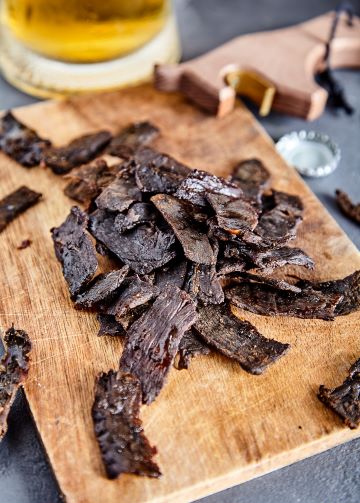
How to Make Jerky
By: Plain Direct
February 1st 2024, 12:00:00 am
If you are interested in processing and curing meat as a hunter or as a hobbyist, you might want to dip your toes into making jerky, too. Jerky is a nutrient-dense meat that was dried to become shelf-stable. According to the USDA, a pound of meat or jerky can be reduced to just 4 oz of shelf-stable jerky. Because its lightweight, shelf-stable, and dense in nutrients, jerky is a great food for hikers, campers, and hunters. Its origins date back to ancient times and in North America, it was taken on hunting expeditions by American Indians. Read more to learn how to get started with this ancient way of preparing meat.
What Kind of Meat Can You Use for Jerky?
There are many meats you can use for jerky, the most common of which is beef. The best cuts to buy for your beef jerky are lean cuts, like top round, bottom round, lifter and pectoral, flank steak, or skirt steak. Beef is not your only option, though, as poultry, like chicken and turkey, make great jerkies, too. If you are a hunter, you can make venison jerky. If you want something exotic, you can make jerky out of pretty much anything from wild boar to alligator, or give buffalo jerky a try, like the American Indians did.
What Supplies Do You Need for Jerky?
To make your own jerky, you’ll need a lean cut of meat and whatever spices or marinades you’ll use to season the meat. You can find plenty of pre-made blends, invent your own, or find marinade recipes online. The tools you’ll need include a sharp knife or meat slicer, a bowl and whisk for your marinade, a wire rack and pan, and something to cook in. Conventional ovens work fine, but a dehydrator or smoker yields even better results.

How to Make Beef Jerky
You can find more specific recipes on cooking websites, but, in general, there are three steps you’ll need to follow to make your own jerky.
Preparing the Meat
To make jerky, you need lean meat. If there is any extra fat, you’ll want to trim it first. Extra fat or a fatty cut of meat will prevent the meat from drying properly. Once the fat is trimmed, you can begin slicing your meat into thin strips, about ¼ to ⅛ of an inch thick. Cut against the grain to help break down the natural fibers. If you partially freeze the meat, it can make it a little easier to cut at a consistent thickness.
The Marinade
After your meat is trimmed and sliced, it’s time to marinade the meat. You can use a wet marinade or a dry rub to season your jerky; there are plenty of recipes online. Let it marinate for at least 30 minutes but you could let it go for a full 24 hours, depending on the type of marinade and how strong you’d like it to be. After you’re done marinating, you can optionally hammer it with a meat tenderizer to get it thinner and break down the fibers further.
Cooking the Jerky
With your meat prepared and marinated, it’s time to finish it off with cooking. You can use a conventional oven, a smoker, or a dehydrator for this step. No matter how you cook it, you’ll start by laying your strips along a wire rack on top of a pan. A dehydrator will usually come with these. The wire rack allows any remaining fat to drip down onto the pan, leaving just the dehydrated meat. The key to cooking jerky is low and slow. Expect to keep your jerky cooking for at least 4 hours to allow all of the moisture to leave the meat.
Need to find the equipment you’ll use for making jerky? Check out the listings on Plain Direct! Local homesteaders, like you, are posting their things online to sell or trade with you. Register an account to get started.
Share:
Tags:
No tags yet.